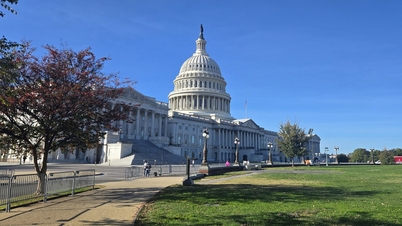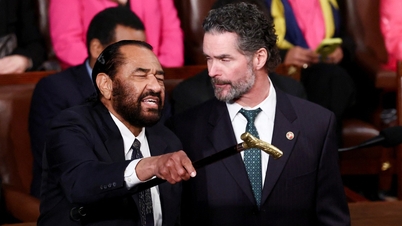According to a New York Times analysis of primary election data, many voters in Democratic strongholds across the country, from downtown to suburbs, did not turn out to vote for Vice President Kamala Harris. That was a lower turnout than President Joe Biden did in 2020. The data highlighted a picture of a landslide victory for Mr. Trump. The president-elect won the White House not only because he appealed to his supporters and undecideds, but also because many Democrats stayed away from the 2024 election. In part, perhaps because they disliked both candidates. In counties where Democrats won big in 2020, Ms. Harris received 1.9 million fewer votes than Mr. Biden. Meanwhile, in the 47 states that have almost completed counting, Republican-heavy counties could add 1.2 million votes to Mr. Trump’s 2024 tally. The decline is both demographic and economic . The trends are most pronounced in counties with the highest job growth, the highest job losses, and the highest proportion of college-educated voters. Turnout also fell in traditionally Democratic areas, including areas with large Black, Catholic, and Jewish voters. And the fact that key cities like Detroit and Philadelphia have also seen this trend makes it especially difficult for Ms. Harris to gain an advantage in the battleground states of Michigan and Pennsylvania. These are signs that Democrats need to reinvent their approach to appeal to voters who are tired of the anti-Trump message and have lost faith in both parties. Because clearly in the previous three elections in 2018, 2020, 2022, many people still went to vote and brought good news to the Democratic Party.
Alarming numbers
In the battleground state of Pennsylvania, Mr. Trump’s victory was partly due to an unlikely reason: the five counties with the highest percentages of Democratic voter registration: Allegheny, Delaware, Lackawanna, Montgomery, and Philadelphia. Ms. Harris won these counties, but not by enough margin to overcome areas with many Republican voters. Total turnout was down from 2020 in the five Democratic strongholds, partly explaining why Ms. Harris had 78,000 fewer votes than Mr. Biden. Meanwhile, Mr. Trump had 24,000 more votes in these five counties. This made Ms. Harris almost “unlikely” to win in Pennsylvania. As of November 10, Mr. Trump was ahead by 145,000 votes. In Wisconsin, turnout was generally high, but counties with many Democrats could not keep up with counties with many Republicans. In eight counties, including Milwaukee, Madison and the surrounding suburbs, Harris led Biden by about 20,000 votes. But Trump also won by a similar amount. In the rest of Wisconsin, Democrats were defeated. In Michigan, Trump's advantage was largely due to a decline in turnout in Wayne County, which includes Detroit and suburbs like Dearborn and Hamtramck, the most important source of Democratic votes. Although Harris won Wayne County, she won about 61,000 fewer votes than Biden, a 10% decrease, while Trump won 24,000 more votes, a gain of about 9%. The change ended Harris's hopes of winning in Michigan, where Trump led by about 81,000 votes.
"Democratic Doomsday"
There are several reasons for this trend. First, turnout may be falling after a record high in 2020, thanks in part to rule changes during the Covid-19 pandemic that increased mail-in voting. Second, some analysts point to a post-pandemic trend in which voters tend to favor newcomers over incumbents, regardless of their political affiliation, in countries like Japan, South Africa, South Korea and the UK. Third, the close results in swing states suggest Democrats have a chance to beat Trump again. Some officials say Harris didn’t have enough time to reorganize her campaign after Biden, whose approval ratings plummeted after his 2020 victory, withdrew. Third, many critics of the vice president’s campaign message say she’s wasting her time trying to woo Republican voters by campaigning with conservatives and preaching about threats to democracy. Instead, they say she should spend her time sharing how her economic policies will affect a critical but disaffected segment of the electorate.
Ms. Harris's failure is said to be due to an insufficiently convincing message. Photo: New York Times.
According to expert Branden Snyder, some activists in Detroit (Michigan) questioned Ms. Harris's invitation to Ms. Liz Cheney - a former Republican Congresswoman - to campaign together in this city. He said that many progressive voters in the city consider Ms. Harris to be moderate, so they would feel more convinced if a liberal person talked about why they should vote for the vice president. Mr. Snyder also added that in the last week before the election, at the home of a middle-aged black woman, he could not find a way to convince her to vote. Black women have long been one of the most loyal groups of the Democratic Party. "When black women do not vote because they think voting will not change anything, that moment is the end of the world for the Democratic Party," he said. Fourth, the difference in the structure of the election campaign between the Republican and Democratic parties also needs attention. The well-funded Harris campaign relied on a traditional approach, placing field staff in offices across battleground states. To some extent, it worked, with Harris outvoting Biden in several battleground states. But that was overshadowed by Trump’s performance. Trump, meanwhile, took advantage of new federal election rules that for the first time allow campaigns to work directly with outside groups to drive turnout. “Trump has a more aggressive and aggressive approach, delivering a consistently sharp message through rallies, podcasts, and appearances. The Democrats seem to be focused on seven battleground states and nothing more,” said Donna Brazile, former chair of the Democratic National Committee. znews.vn
Source: https://znews.vn/phat-hien-moi-ve-ket-qua-bau-cu-tong-thong-my-post1511106.html


![[Photo] Students of Binh Minh Primary School enjoy the full moon festival, receiving the joys of childhood](https://vphoto.vietnam.vn/thumb/1200x675/vietnam/resource/IMAGE/2025/10/3/8cf8abef22fe4471be400a818912cb85)


![[Photo] Prime Minister Pham Minh Chinh chairs meeting to deploy overcoming consequences of storm No. 10](https://vphoto.vietnam.vn/thumb/1200x675/vietnam/resource/IMAGE/2025/10/3/544f420dcc844463898fcbef46247d16)





































































































Comment (0)